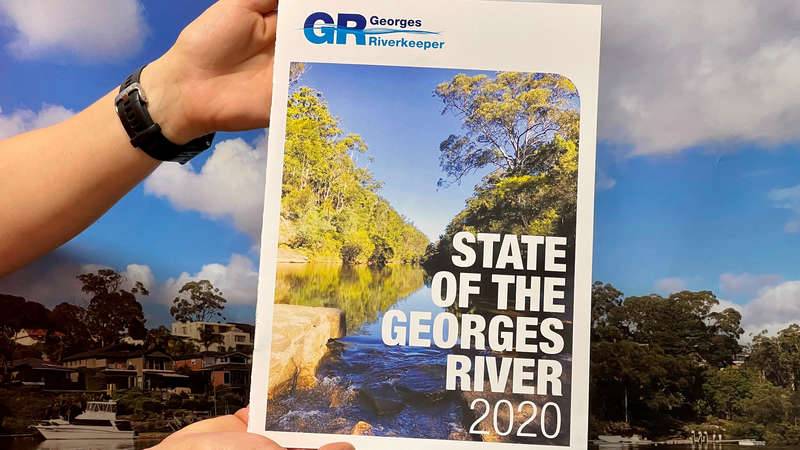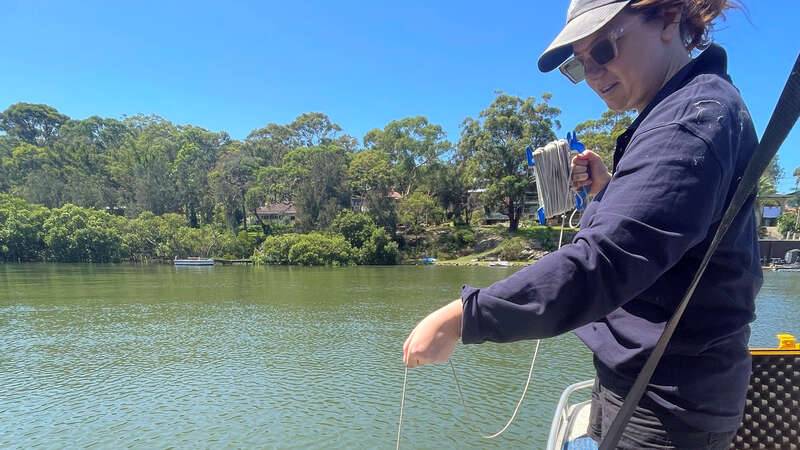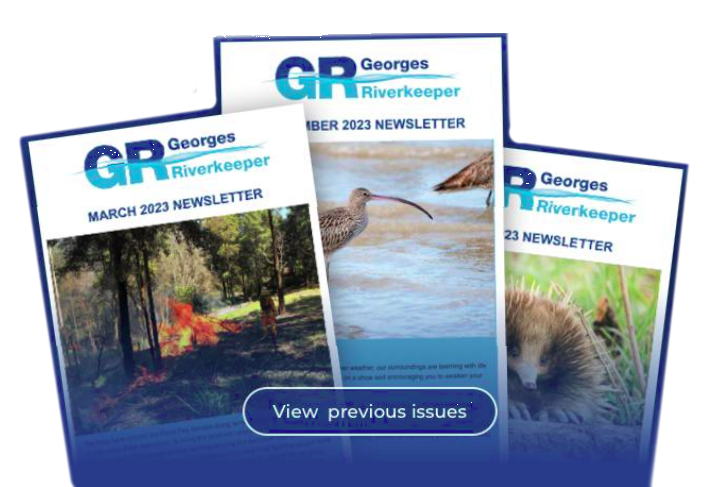Mixed grades for Georges River in new health report

The recently released State of the Georges River 2020 report gives the health of the Georges River an overall “B-“ grade for the freshwater part of the river, and an overall “A” grade for the estuary.
However, some creeks in the middle, more populated areas of the Georges River catchment, scored poorly.
These included Bunbury Curran, Cabramatta and Prospect Creeks and most of the smaller creeks flowing directly to the estuary.
The river health in those waterways is rated "Fair” to “Poor”, which is reflective of degraded riparian vegetation (often only narrow strips of weedy vegetation along creeks), poor water quality and low diversity of waterbugs.
The ecological degradation of urban creeks is consistent with the worldwide phenomena known as the ‘Urban Stream Syndrome’.
The main cause of this syndrome is the much larger volumes of stormwater that are delivered from urban landscapes than are delivered from forested landscapes, and sewage overflows and legacy pollutants also contribute.
During rain events, these creeks function not as creeks should, but as stormwater canals which rapidly transfer the pollutant loaded stormwater into the river.
For the freshwater creeks, symptoms include altered channel morphology, highly eroded banks, widespread weeds, elevated waterborne pollutants (including litter), reduced native biodiversity and increased dominance of tolerant aquatic species, including non-natives.
Fortunately, ecological health has been maintained in the forested creeks in the upper Georges River catchment.
Grades were mostly "Good" to "Excellent" within the Georges River estuary (from below Liverpool Weir to Botany Bay). This reflects that sampling did not directly follow major stormwater runoff events. Also, Georges Riverkeeper has consistently found that during droughts and periods of low rainfall (as has been experienced in 2018-20) that water quality in the upper estuary is better than in wetter periods.
The grades are generally on par with previous River Health Report Cards. For the past decade, River Health Report Cards from Georges Riverkeeper have shown that the urban creeks that flow into the rivers have poor condition.
Georges Riverkeeper Program Manager, Peter Ryan, says, “People ask whether the grades have improved over time. The unfortunate truth is that they haven’t. The legacies from past polluting land uses continue to impact the river. Waterways continue to be subject to pressures including deforestation and habitat loss, high stormwater flows, sewage, litter and pest aquatic species. Climate change is also exacerbating impacts on the Georges River and catchments.”
He says, “Improving the health of the Georges River provides healthier places for communities and for non-human species to live and thrive.’’
“We consider the results are a sign of the resilience of the river and an important reminder to everyone that what goes down the stormwater drain, ends up in the river.”
Want to know more? Follow the link to read all about The State of the Georges River 2020.















